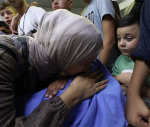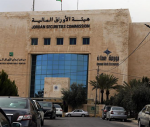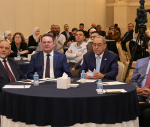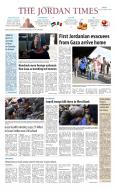You are here
Barefoot Nisswiyya: Unearthing Empowerment through grassroots threads
Oct 07,2023 - Last updated at Oct 07,2023
In 2002, I coined the term 'barefoot nisswiyya' [feminists] to represent a unique form of nisswiyya that seeks to bridge the gap between theory and practice, intertwining the personal with the political. It diverges from 'femocracy' and power-centric empowerment, expanding the realm of nisswiyya to embrace expressions of indigenous knowledge driven by the agency of homegrown grassroots women.
Through the methodic tools of Bawh (spontaneous intimate articulation and disclosure) and Ishrah (engaging connectedness), I delve into connections with grassroots women - shepherdesses, farmers, factory workers and janitors.
The genesis of barefoot nisswiyyat and its ethos can be traced back to my encounter with Max-Neef's book 'From the Outside Looking In: Experiences in Barefoot Economics' in 1992. Max-Neef metaphorically employed this literal term to comment on development trajectories, cautioning against marginalising the agency of the economically disadvantaged. He urged experts and economists to move beyond understanding poverty in fancy offices through fancy graphs advocating for a more inclusive approach to understanding poverty. I draw a parallel between this insight and the present-day situation, where some current development trajectories employed for women's 'empowerment' in the world perpetuate the marginalisation of the marginalised, normalising the exclusion faced by grassroots nisswiyyat.
This concept is not an attempt to rewrite or reimagine coloniality, nor is it a 'post'-colonial narrative. Instead, it weaves its fabric from the genuine experiences of grassroots actors and the intrinsic ecology of barefoot nisswiyyat, who, through their resourcefulness, not only survive and thrive but also leave an indelible mark on their communities.
The term 'Barefoot nisswiyya' eloquently captures the immediate connection between the foot and the earth, devoid of any intermediary. It encompasses both metaphorical and literal dimensions of 'barefoot'. Literally, it signifies that these nisswiyyat lack resources or avenues for survival and prosperity. They traverse the fields, using their bare feet to unearth and cultivate opportunities, not only for themselves but also for their communities.
Metaphorically, it underscores the interdependence and co-constitution of the foot and the field in terms of mobility and impact. Barefoot nisswiyyat navigate the terrain without the trappings of excess or the barriers of separation, crafting opportunities through their own efforts. This is the proactive agency that defines barefoot nisswiyyat.
In essence, barefoot nisswiyya rejects the simplification of experiences into polarising binaries like metropole-periphery distinctions. It eschews the reduction of the rich tapestry of lived experiences into an overly simplified narrative of 'center versus the rest' (McClintock 1992).
In conclusion, the call resounds globally, to ensure that no nisswiyya movement is left behind, and that the legacy of barefoot nisswiyyat is woven into the very fabric of our shared narrative. Together, we pave the way for a future where empowerment knows no bounds.
One story that encapsulates the spirit of the barefoot nisswiyya is that of Zahra (the blossom) . In the wake of her husband's passing, Zahra found herself tasked with caring for seven children, bereft of financial support. Undeterred, she shouldered the weight of two jobs, donning the roles of both a dedicated school janitor and a skilled wool carpet maker. Her determination was boundless, fueled by an unwavering commitment to securing a dignified life and education for her children. Zahra understood that education was their beacon out of the abyss of poverty and societal exclusion that had engulfed her after her husband's demise. With unyielding resolve, she insisted they pursue university degrees. To overcome the rugged terrain and the absence of transportation, she personally ferried her youngest, who bore a physical disability, to and from school.
This is the tale Zahra shared with me, amidst our laborious engagement in crafting woolen masterpieces. Within the village, students contemplating leaving their studies were confronted by their parents with a challenge: learn dedication and diligence from Zahra's offspring. She was addressed by her given name, Zahra. This departure was a gesture of reverence for a woman's autonomy, notably her name. In the village's ancient tribes, calling women by their first names was a customary mark of honour, reserved for those exemplifying sagacious leadership. They even referred to men as the brother of (using her first name). Addressing Zahra by her given name signaled her elevation to the esteemed status of (Sheikha), earning her the profound respect and admiration of her community. Her transformation of adversity into a wellspring of inspiration within the village stands as an awe-inspiring testament.
A young student shared their sentiments: "I cherish Zahra; her kindness and affectionate nature. She unfailingly left the school pristine, beckoning us back in the early morning to relish its purity. Before Zahra, the school bore a desolate air, urging us to flee whenever we could. Zahra greeted us with a radiant smile and tender care. She transformed the school into our second abode."
This village boasted a strikingly high rate of literacy and university enrollment, largely attributed to Zahra's indelible influence. Her impact radiated through the choices made by her children, and the village's youth at large. She deftly managed two vocations, channeling resources to ensure her progeny accessed educational opportunities, propelling them towards self-actualisation and promising careers. Zahra's legacy reverberated beyond her immediate kin, elevating educational standards and achievements throughout the entire village. Her tenacity had not only birthed a brighter future for her family but had also illuminated the path for an entire community.
The writer is an associate professor at the American University of Madaba and an academic activist
- Popular
- Rated
- Commented
Nov 03, 2023
Nov 03, 2023
Oct 31, 2023
Nov 03, 2023
Newsletter
Get top stories and blog posts emailed to you each day.











